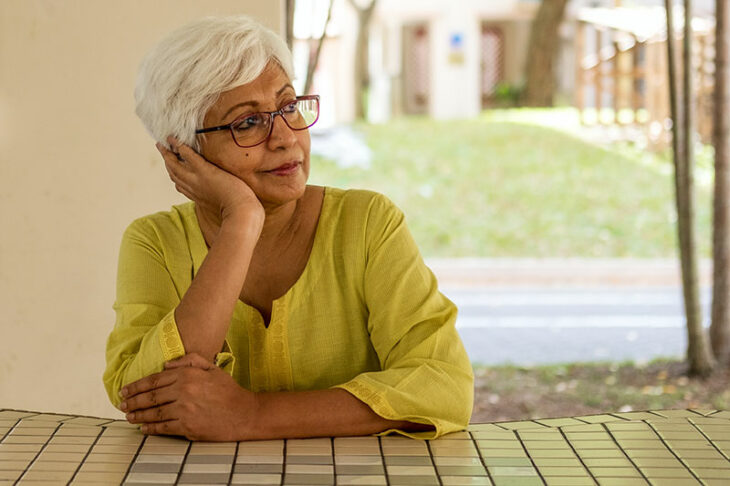In 1973, my grandmother slipped on a loose rug in her hallway and fell. Due to osteoporosis, what would have been a bruise for her a decade earlier resulted in a broken hip. At the time, minimal activity was recommended to allow healing. This resulted in her developing bed sores and pneumonia, and within a month, she passed.
Because we see skeletons as dead structures, we may not realize that bone actually lives. Throughout our lives, old bone is absorbed, and new bone is laid down in replacement. As we age, more is removed than formed, resulting in weaker bones that are more susceptible to fractures.
To make strong bones in childhood, the body needs an adequate and constant supply of calcium, protein, magnesium, phosphorous, potassium, fluoride and vitamin D. Without adequate nutrition and exercise, bones will be weak, susceptible to fracture and may even develop bowing, a condition known as rickets.
Osteoporosis means “porous bone.” Our bones are most dense in our early twenties. Over time, the weakening can become extreme. One in three women and one in five men over the age of 50 will suffer a broken bone due to osteoporosis. Although all bones can be affected by the disease, the bones of the spine, hip and wrist are most likely to break.
One in four women who have a new spine fracture will have another bone fracture within one year. In women over age 45, osteoporosis-related fractures result in more days spent in the hospital than diabetes, heart attacks and breast cancer. Although children usually heal quickly, broken bones in older adults result in long-term issues. Bone fractures reduce quality of life and place physical, emotional and financial strain on patients and their families.
Perhaps the most serious consequence of osteoporosis is a hip fracture. About one-quarter of people who suffer this fracture will never walk again or may die of complications. It takes at least six months for a hip fracture to heal. Even for those who recover, a third of hip fracture patients are totally dependent or in a nursing home a full year later.
Every woman over age 65 should be evaluated for osteoporosis, as well as younger women with risk factors. These include low body weight, smoking, a family history of osteoporosis or any prior fracture from a minor injury. The standard test to determine osteoporosis is a bone density scan that measures bone mineral density. From this and other studies, the doctor will determine a T-score, with normal being zero. A T score below -2.5 indicates osteoporosis.
Treatment involves both medication and lifestyle issues. Daily exercise increases muscle strength and balance and helps relieve pain. Low impact exercises are best, such as dancing, Pilates and swimming. Even walking as little as three to five miles a week can improve your bone health. Other lifestyle changes, such as quitting smoking, proper nutrition and weight control can help sustain bone density.
Having adequate calcium in your diet is essential, with 1000 to 1200 milligrams recommended based on age. Supplements may not be the best source, as some studies suggest they may not help preserve bone and might lead to heart disease. Instead, concentrate on calcium-rich foods, such as milk products, leafy green vegetables, beans, nuts, egg yolks and fish, like sardines and tuna. Other bone-friendly nutrients include magnesium and potassium.
RECOMMENDED DAILY CALCIUM INTAKES FROM THE U.S. INSTITUTE OF MEDICINE
Age
Calcium recommended daily Intake (mg/day)
0-6 months
200
6-12 months
260
1-3 years
700
4-8 years
1000
9-13 years
1300
14-18 years
1300
19-50 years
1000
51-70 years
Women 1200
Men 1000
Over 70 years
1200
The body requires vitamin D to absorb calcium and phosphorous from food. Oily fish, red meat, liver, and egg yolks have vitamin D, while other foods have it supplemented, including milk and breakfast cereals. The best source of vitamin D is sunlight. Doctors recommend 10-30 minutes of direct sun exposure several times a week. When doctors find that their patients have low vitamin D levels, they often recommend oral supplements, which unlike calcium supplements are safe and effective.
Until the 1990s, female hormones were prescribed to prevent bone loss. However, due to their many side effects they’re no longer considered appropriate therapy. The most widely prescribed osteoporosis medications are called bisphosphonates, such as Fosamax, Boniva, or Reclast. These can be taken orally once weekly or monthly. Some are available for intravenous infusion once every three months or even once yearly. Although these medications will curb osteoporosis and help build bone strength, they won’t cure the disease. There also are bone-building drugs, Forteo, Tymlos and Evenity, which require injections and are reserved for people at very high fracture risk.
Aging-induced bone loss occurs in everyone. Regular exercise and proper diet will help limit the development of osteoporosis. Ask your doctor if you need a bone density test. Diagnosis of osteoporosis and initiation of medication may prevent fractures and their complications.



